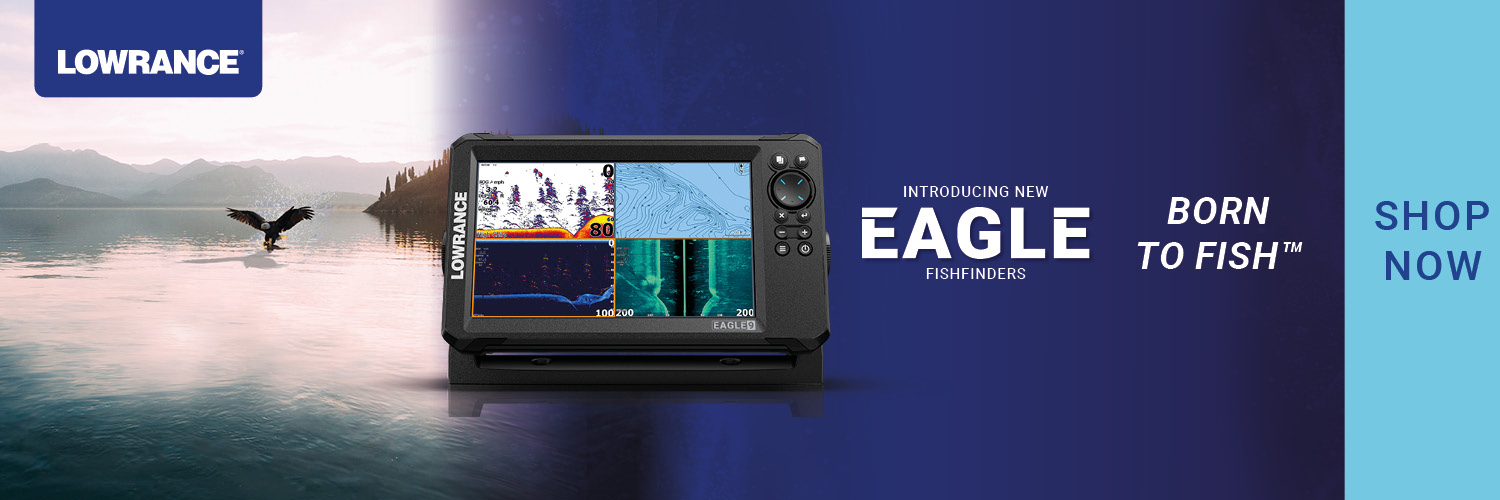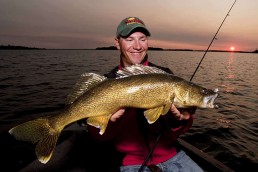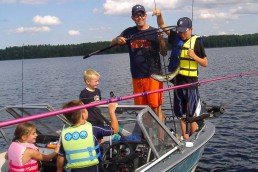Finding your own Northern Ontario Muskie Mayhem
No fish stirs the hearts and minds of anglers more than muskies. And no where else will you find better muskie fishing than in northern Ontario with illustrious waters like Georgian Bay, the French River, Lake Nipissing, Lake Nosbonsing, the North Shore of Lake Huron, Lac Seul, Wabigoon Lake, Eagle Lake, Lake of the Woods, Rainy Lake and the Winnipeg River. It is the stuff of which legends are made, but there’s another reality associated with muskie fishing: even when the fish are plentiful, as they are in the pristine waters of northern Ontario, muskies are never abundant. Certainly not in the same context as walleyes, smallmouths, yellow perch or black crappies. It’s a function of the status and role of all top predators whether they are lions, tigers or timberwolves and it’s why the elusive muskie is known to many as “the fish of 10,000 casts.”
But there is a unique and marvelous exception.
I bet you didn’t know this, but there are two species of muskies in northern Ontario that have very different genetics, morphologies, anatomies and ostreologies—the bone structures in the fish’s heads. These two muskies spawn in their own unique ways, the larvae are different and to the trained eye and the fish can be distinguished by simply looking at their silhouettes.
Bernard Lebeau was the first person to make the discovery when he completed his groundbreaking doctoral work at the University of Toronto, under the guidance of the late Dr. Ed Crossman, perhaps the foremost esocidae scientist ever, and Curator in charge of the Department of Ichthyology and Herpetology at the Royal Ontario Museum.
When LeBeau was completing his research he differentiated between the two fish by calling one “maskinonge” and the other “muskellunge.” But the differences are more dramatic than just a slight play on words.
According to LeBeau, maskinonge, which are the oldest of the two muskies species, behave like northern pike, spawning in shallow, weedy, backwater areas in the spring. Muskellunge, on the other hand, lay their eggs in much deeper habitats on sand, gravel and sediment that is almost completely devoid of vegetation.
But here is the important divergence for anglers.
In many areas of northern Ontario, especially the huge swath of land and water in the northwestern part of the province between the Manitoba border and Thunder Bay, you can find numerous small- and medium-sized lakes where only muskies and no pike exist. These are LeBeau’s maskinonge, and in these systems the fish are plentiful. Part of the reason is because the waters are naturally pure. In fact, Lebeau says that maskinonge cannot tolerate or compete with pike. They need to live alone, in what biologists call “allopatry.”
The other characteristic is that in these unique maskinonge waters the fish grow much more slowly than their muskellunge counterparts and never achieve the enormous world record sizes for which muskellunge are famous.
This may be the case, but when you’re catching eight, ten, even a dozen or more leaping-out-of -the-water muskies a day, who really cares?
And if you, or a friend, has never caught a muskie before, these small, pure, unique muskie lakes that are scattered across northern Ontario offer tailor-made muskie fishing experiences. And, it’s why I took my grandson Liam, who wanted to catch his first muskie ever, to one of these lakes last week. Within an hour or so of battling several gorgeous fish, he was flying on top of the world. I should mention, too, that because the fish associate so strongly with weeds, reeds and lily pads and since a 15- to 20-pound fish is huge, you don’t need to buy any specialized tackle. The same gear you use to catch largemouth bass—medium and medium heavy spinning and baitcasting outfits, spooled with 12- to 17-pound-test braided line is just what the doctor ordered.
About the only thing you need to remember is to bring along are some light 8- to 12-inch metal leaders to prevent the toothy critters from biting off your lures.
And talking about baits, lure selection is an easy and simple task. Having enjoyed many––though never enough––fishing trips to these pristine muskie waters, I have found over the years that the gold standard presentation is a simple #3 to #5 Mepps spinner. Never leave home without them. Other go- to standards include small jerkbaits like the #10 to #12 Rapala X-Rap, lipless crankbaits like the Kamooki Smartfish and chatterbaits like the Z-Man Chatterbait Freedom tipped with a 5-inch grub or swimbait.
Now you’re set; go make some muskie mayhem.
Hall of Fame fisherman, fisheries scientist, and legendary fishing writer Gord Pyzer has a Master’s in Resource Management, spent 30-plus years with Ontario Ministry of Natural Resources, and is a pioneer in modern muskie management. Pyzer is Fishing Editor for Outdoor Canada magazine, and now a regular contributor to MidWest Outdoors.
MWO
SHARE THIS POST
Did you enjoy this post?
You can be among the first to get the latest info on where to go, what to use and how to use it!
Gord Pyzer
Hall of Fame fisherman, fisheries scientist, and legendary fishing writer Gord Pyzer has a Master’s in Resource Management, spent 30-plus years with Ontario Ministry of Natural Resources, and is a pioneer in modern muskie management. Pyzer is Fishing Editor for Outdoor Canada magazine, and now a regular contributor to MidWest Outdoors.




